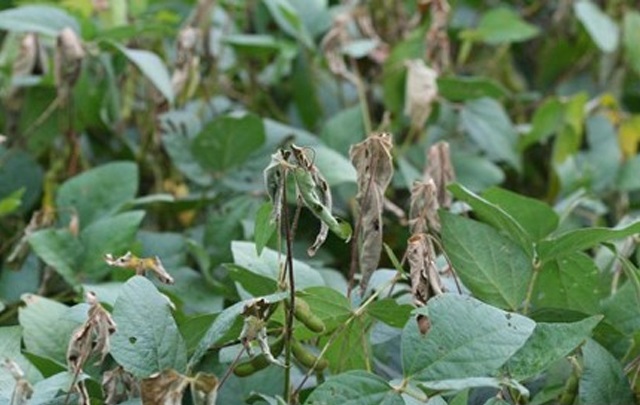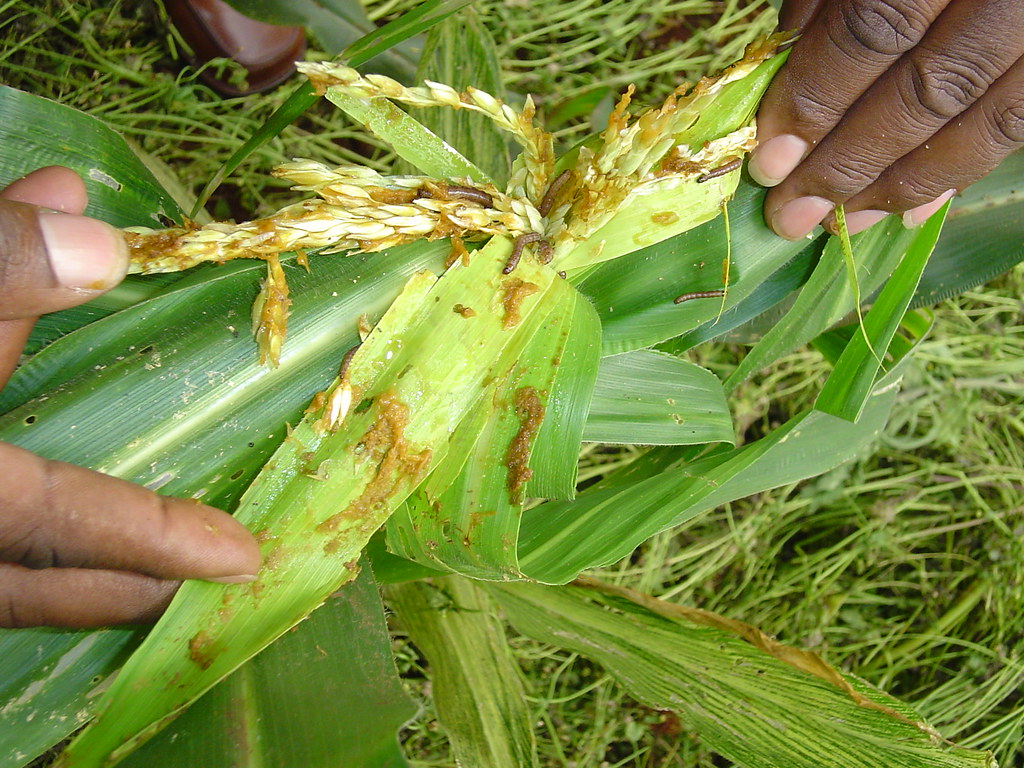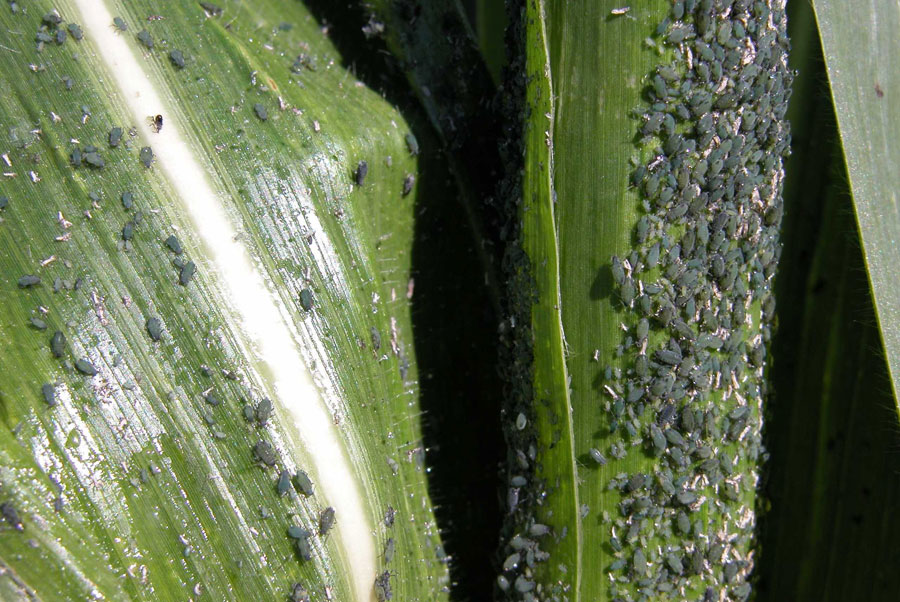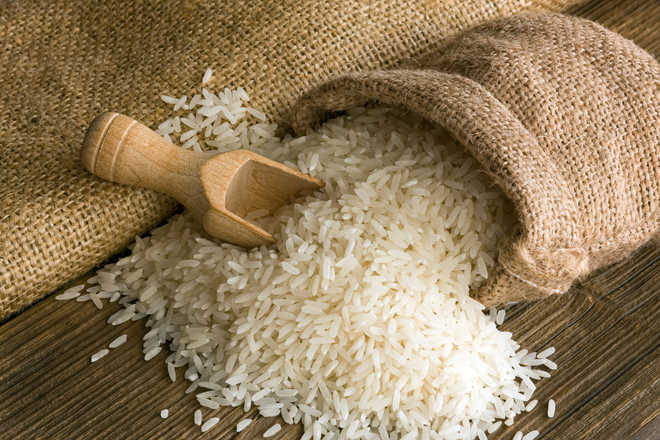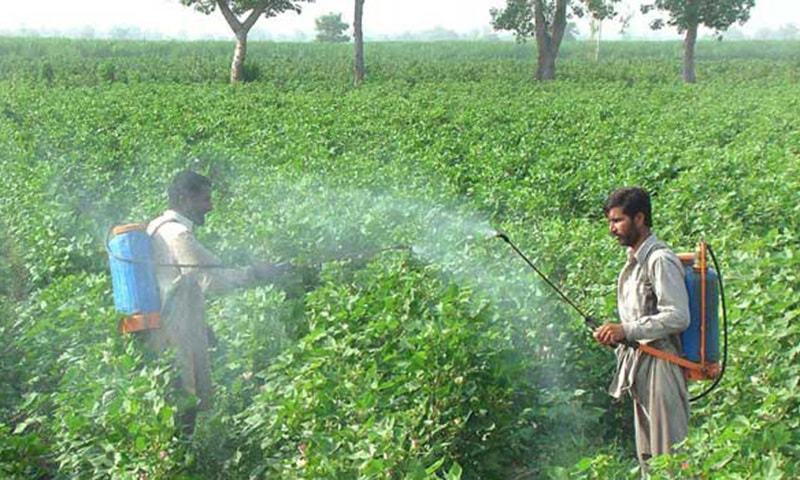- At the time of sowing of ginger, as fertilizer management is necessary similarly fertilizer management is very necessary after 20-30 days of sowing.
- This management is done to increase the good growth of ginger crops and immunity against diseases.
- At this time, the ginger rhizome is spread in the soil, fertilizer management is very important for good growth of the plants.
- for this use MOP @ 30 kg / acre, SSP @ 50 kg / acre, zinc sulfate @ 5 kg / acre or NPK consortia 3 kg / acre, zinc bacteria @ 4 kg / acre, mycorrhiza @ 4 kg / acre
- It is necessary to have moisture in the field at the time of the use of fertilizers.
Management of Anthracnose in Soybean
- Anthracnose is first seen during reproductive growth stages.
- Symptoms usually appear as dark, irregular lesions on leaves, or pods.
- When the pod is infected, the fungus can completely fill in the pod and no seeds are produced, or, smaller seeds may form.
- for its control ude Tebuconazole 10% + Sulfur 65% WG @ 500 gram / acr
- Carbendazim 12% + Mancozeb 63% WP @ 300 gram / acre
- Spray the thiophanate methyl 70% WP @ 300 ml / acre
Spraying Management in Soybean after 20-30 days
- Different types of insects especially girdle beetle, blue beetle etc. and diseases are active in the growth of soybean crop.
- In order to control these pests and diseases, spraying management is very important in 20-30 days which is as follows.
- Lambda-Cyphlothrin 4.9% CS @ 200 ml / acre
- Or Profenophos 50% SC @ 500 ml / acre
- Spraying Carbendazim 12% + mancozab 63% WP @ 300 gram / acre.
- Beveria Basiana @ 500 gram / acre This spraying is required for the control of insects.
- Seaweed 400 ml / acre or amino acid @ 300 ml / acre or G A 0.001% @ 300 ml/acre This spraying is very important for a good growth period.
- If it rains within 24 hours of spraying, spray again.
- The lower surface of the leaves should be sprayed completely because insects feed on that part.
- Spraying of the same pesticide chemical should not be repeated.
Government will give one lakh crore rupees for agricultural infrastructure fund
One lakh crore rupees have been approved for the creation of an agricultural infrastructure fund by the central government. With the help of this fund, loans will be given at a cheaper rate for the development of infrastructure in the agriculture sector and this will give impetus to private investment in remote rural areas as well as create new jobs.
Presiding over the Union Cabinet meeting on this subject, PM Modi took a decision in this regard. Let us know that the Agriculture Infrastructure Fund is a part of the same economic stimulus package of PM’s Rs 20 lakh crore that he announced a few days ago while addressing the nation.
Giving information about the decisions taken in this meeting, Union Agriculture Minister Narendra Singh Tomar said, “This is a historic decision. This will give a further boost to the agricultural sector. “He further said that” The agriculture infrastructure fund of Rs one lakh crore will work as a medium to encourage private investment in rural areas. The Cabinet has approved this. It will help transform the agricultural sector.”
Source: Navbharat Times
ShareManagement of borer in Maize
- In maize have many types of insects attack
- They cause a lot of damage to the corn crop.
- These borers are like pink stem worm, stem fly, cut worm, ear head bug, fall army worm etc.
- These insects cause a lot of damage to maize crops in all three stages like fruit flowering, and growth .
- For the prevention of these pests, do seed treatment with cynatraniliproel 19.8% + thiamethoxam 19.8% FS @ 6 ml / kg seed
- Flubendamide 20% WG @ 100 gram / acre or Chlorantraniliprole 9.3% + Lambda cyhalothrin 4.6% ZC @ 100 ml / acre or thiamethoxam 12.6% + Lambda cyhalothrin 9.5% ZC @ 80 gram / acre or fipronil 40% + imidachloroprid 40% WG@ 40 gram/acre
Management of Aphid and Ear Head Bug in Maize
- Ear head: – Ear head nymphs of the bug and adults suck the juice from inside the grain, due to which the grains shrink and turn into black color.
- Aphid: – A small kit which causes damage to the plant by sucking it from the plants and causing a large amount of damage to the plants by staying under a large number of leaves.
- It can be used to control low-cost products
- Profenophos 50% EC @ 500 ml/acre or acetamiprid 20% SP @ 100 gram/acre or acetate 50% + imidacloprid 1.8% SP @ 400 gram/acre.
2 lakh solar pumps to be given on subsidy to farmers of MP in next three years
The government is giving a lot of boost to the alternative source of electricity. In this series, Kusum Yojana has been started for the farmers to use solar energy for electricity. Along with this, the state government is also starting schemes related to providing solar pumps on subsidy.
Talking about Madhya Pradesh, a target has been set to give 2 lakh solar pumps to farmers in the coming three years. Significantly, by installing solar pumps, the farmers of the state will get the benefit of better irrigation. Farmers of the state are also being encouraged to install solar pumps. To date, 14 thousand 250 solar pumps have been installed for farmers under the Chief Minister Solar Pump Scheme. In the coming time this number will increase further and 2 lakh solar pumps will be installed.
Source: Kisan Samadhan
SharePowdery mildew and downy mildew symptoms and management
- Both usually affect only the leaves, which attack the lower and upper parts of the leaves.
- Downy mildew (Plasmopara viticola) affects many plants and appears as yellow to white patches on the lower surfaces of older leaves. On the undersides, this area appears white to brown in color.
- Powdery mildew also affects many plants and appears as yellow to white spots on the upper surfaces of old leaves.
- For the management of these, azoxystrobin is sprayed at the rate of 11% + tebuconazole 18.3% SC @ 300 ml / acre or azestrobin @ 300 ml / acre or tebuconazole 10% + sulfur 65% WG @ 500 gram / acre.
- Spraying Trichoderma viridis @ 250gram / acre + Pseudomonas fluorescens @ 250gram / acre as a biological treatment
Basmati rice of Madhya Pradesh will get a GI tag? Farmers will benefit
The Madhya Pradesh government is trying to get the GI tag for Basmati rice grown by about 80,000 farmers in 13 districts of Madhya Pradesh. For this, Chief Minister Shivraj Singh Chouhan has met Union Agriculture and Farmers Welfare Minister Narendra Singh Tomar on Monday. In this meeting, he has asked the Union Agriculture Minister to cooperate in giving GI tag for basmati rice in the state.
What is a GI tag?
The GI tag is a specific geographical indication indicating the specific geographic origin of any product.
The 13 districts of the state in which Basmati rice is cultivated are Aland, Gwalior, Morena, Sheopur, Datia, Guna, Vidisha, Shivpuri, Raisen, Sehore, Jabalpur, Hoshangabad and Narsinghpur. The Chief Minister said in the meeting held with the Agriculture Minister, that the denial of GI tag to rice in these 13 districts in the districts would be an injustice to the farmers of the state and their livelihood. ”
Source: Navbharat Times
ShareSpraying management in cotton in 25-30 days
- Different types of insects and diseases are active in the growth of the cotton crop,
- To control these pests and diseases, spraying management in 20-30 days is very important, which is as follows.
- Acidamprid 20% SP @ 100 gram / acre or Profenophos 40% + Cypermethin 4% EC @ 400 ml / acre or Bavaria basiana @ 500 gram / acre This spraying required for insect control
- 12:32:16 @ 1 kg / acre or homobrassinolide 0.04 W / W @ 100 ml / acre This spraying is very important for good growth of cotton crop.
- If it rains within 24 hours of spraying, do spray again.
- The lower surface of the leaves should be sprayed completely because insects feed on that part.
- Spraying of the same pesticide chemical should not be repeated.


